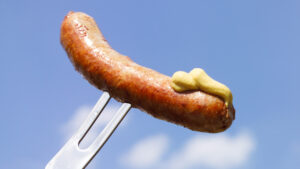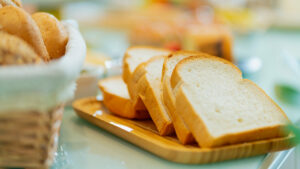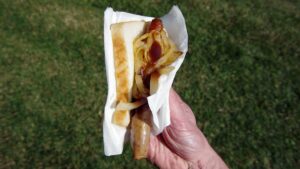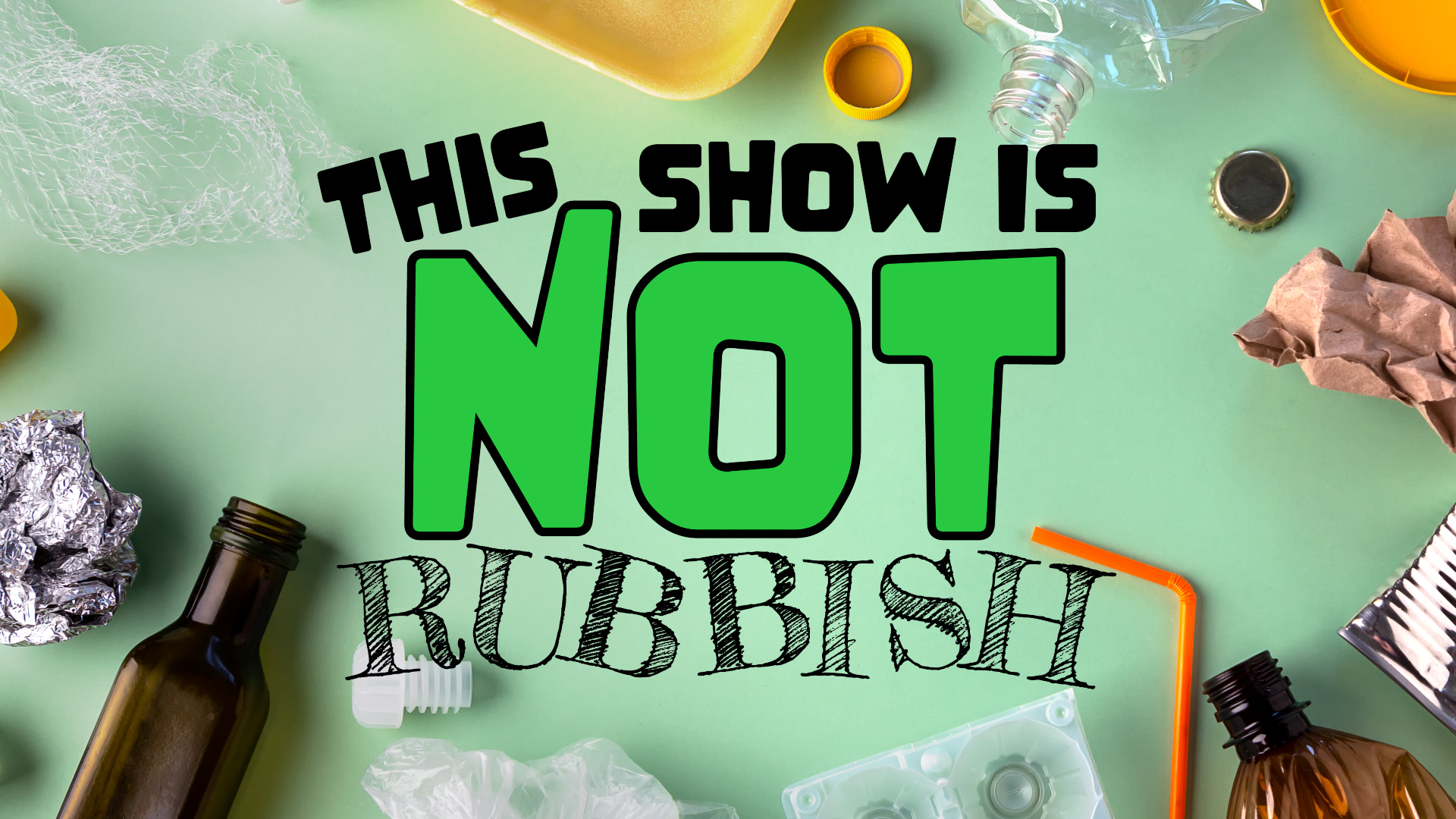What’s actually in the sausage and bread you buy? And are there scientifically safer ways to cook it?
Apply students’ knowledge of living things and chemical reactions in this resource (including an experiment) about food science. It is best suited to Year 5-10 Biology and Chemistry students. It could also be adapted to suit other year groups.
Word Count: 1366
Whether you’re joining the grand tradition of the democracy sausage on election day, or chucking a couple of bucks to the local scout group outside a hardware store, the sausage (or veggie equivalent) and white bread partnership of a sausage sizzle is hard to resist.

But what’s actually in a sausage? What’s allowed to call itself a sausage? And does pricking them while barbecuing really make them healthier – or does it just make them taste worse?
What about the bread the sausage sits in? How does it stay fresh for so long – is there any real food in it at all? (Yes.)
We’re going to do what you’re never supposed to do: see how the sausage is made.
What’s in a sausage?
Lots of people are concerned about ambiguous meat of any description – but Australia has some of the strictest food regulations in the world. Food Standards Australia and New Zealand has rules about what’s allowed to call itself a sausage.
A sausage must be at least 50% meat – or 500 grams per kilogram, to be precise. The other 50% can be whatever improves the flavour of the sausage. Fats, starches like rice or wheat flour, salts, various flavours and preservatives are all common.
Manufacturers also need to specify the meat content of a sausage. The packaging, or the butcher, should always be able to tell you about the amount of meat in the snag – even in the cheapest ones, it often goes well above that bottom line to numbers like 70 or 80%.
But there’s an added complication. That meat content doesn’t have to be lean: in fact, it can be 50% fat itself. So theoretically, the sausage you buy could be only half meat, half of which is fat.
Manufacturers don’t need to specify how much fat is in the meaty part of their sausage, but they do have to explain how much fat is in the sausage total. So you can get a read of the fattiness of a sausage when you buy it, too.
If you’re squeamish about non-canonical meats, you don’t need to worry too much in Australia. Anything that has offal (things like brain, heart, kidney, liver, tongue or tripe) has to label itself as such. So you’re not going to accidentally eat brains in a sausage – you’ll get a warning on the label.
What’s in the casing?
The sausage casing is less regulated, but it usually depends on a protein called collagen. This is an extremely common substance – it’s the most abundant protein in mammals.
Collagen proteins are long, fibrous molecules, kind of like tiny ropes – and they are very useful connective tissue. Collagen provides a lot of the structure in our bodies.
The old-fashioned way to make sausage casings is to use animal intestines, which are rich in collagen. A newer method is to use purified collagen itself, which is usually taken from animal hides.
What’s in plain white bread?
Assuming you’re not involved in sourdough wizardry, bread is easy to make. It needs flour, yeast, and water. It usually also has salt, sugar or oil.

The white bread you get in supermarkets is no different: the starch and the yeast are the two key ingredients.
There might also be some mineral or vitamin additives, and often things called “emulsifiers”. These are chemicals that mix oily stuff and watery stuff together. Lecithin – a molecule found in egg yolks and soy beans, among other things – is a really common emulsifier.
How does the bread stay mould-free?
If it’s all the same stuff as homemade bread, what makes packaged bread last?
I once left a packet of white supermarket bread on top of my fridge, to see how long it would take to go mouldy. After 29 days (well past the use-by date), one of my flatmates noticed the bag and asked me why it was there. Shortly after that, due to circumstances beyond my control, the experiment was terminated.
So I still don’t know how long you can get supermarket bread to last. You are welcome to try your own experiment – I urge you not to eat it, or to tell any of your co-inhabitants about it. While you watch the bread, consider the ingredients in it that are stopping it from getting mouldy.
If you’re trying to keep food fresh, what you’re really doing is killing things that live in it – bacteria, fungus, and other microbes.
There’s a variety of ways you can do this. Heating the bread to bake it is the most obvious, but manufacturers usually use one or two other tactics, as well.
A common one is to make the bread acidic: that is, treat it with vinegar. Much like us, microbes don’t like drinking straight vinegar – the lower the pH, the fewer will survive. This is why you see vinegar on a lot of bread package labels.
Or you can suffocate the tiny creatures. Bread bags are often filled with carbon dioxide or pure nitrogen, so that there’s no oxygen for the microbes to respire. Sometimes, manufacturers will add packets that absorb oxygen to bread bags as well, to further lower the breathability. This is also the logic behind plastic packaging of any food.
The most exciting thing you can do to preserve bread is irradiation. During processing, the food is deliberately exposed to beams of gamma rays or powerful X-rays. These rays have enough energy to ionise things: that is, strip electrons away from their atoms. This is enough to murder the microbes that are hanging out in the bread.
But the radiation isn’t powerful enough to make the food radioactive. It’s similar to a microwave – the gamma rays change a physical property of the bread (and the microbes), but they don’t leave anything behind. The process has been extenstively tested, and it’s as safe as any other preservation technique.
Also, at the moment, bread irradiation isn’t permitted in Australia. A few other foods can be irradiated through: herbs, spices, and some tropical fruits.
Cooking the bugs (and flavour?) out
Barbecuing the sausage is doing the same job as irradiating (or vinegarising) the bread. You have to make the sausage uninhabitable to microbes – this time, with temperature.
Debate rages as to whether you should prick your sausages before cooking, or leave them be. There’s a rumour that pricking the sausage allows the fat to melt and leak out, making it healthier – as far as I can tell, there isn’t any scientific backing to support this.
But pricking can prevent the sausage from exploding. If there’s enough water in the sausage that’s boiling and turning into a gas, it will expand and break the skin. The prick gives the sausage a bit of an outlet.
Lots of people think that puncturing or not puncturing changes the flavour of the sausage. I am completely unqualified to comment on this, but will gladly plot an experiment to test it.
The Onion Conundrum
A few years ago, Bunnings made headlines by releasing a controversial sausage sizzle edict: the onion should go below the sausage, not above. This, apparently, reduces the tripping hazard.

Many people were furious about this rule. How likely was it, really, that someone was going to trip over an onion ring?
But, as someone who once had to write a risk assessment for a thought experiment, I feel for the Bunnings staff. The thing about safety regulations is that once a hazard has occurred to you, you don’t really have a justification for not addressing it. It becomes unethical to ignore it.
Plus, there have in fact been reports of one or two people who’ve slipped on onions at sausage sizzles. This broad public health restriction probably will avoid a few injuries – and it’s way less disruptive than capacity limits, or even masks. So I understand the bottom-onion rule. But given a choice, I personally am willing to risk keeping my onions on the top.
Login or Sign up for FREE to download the educational resources




